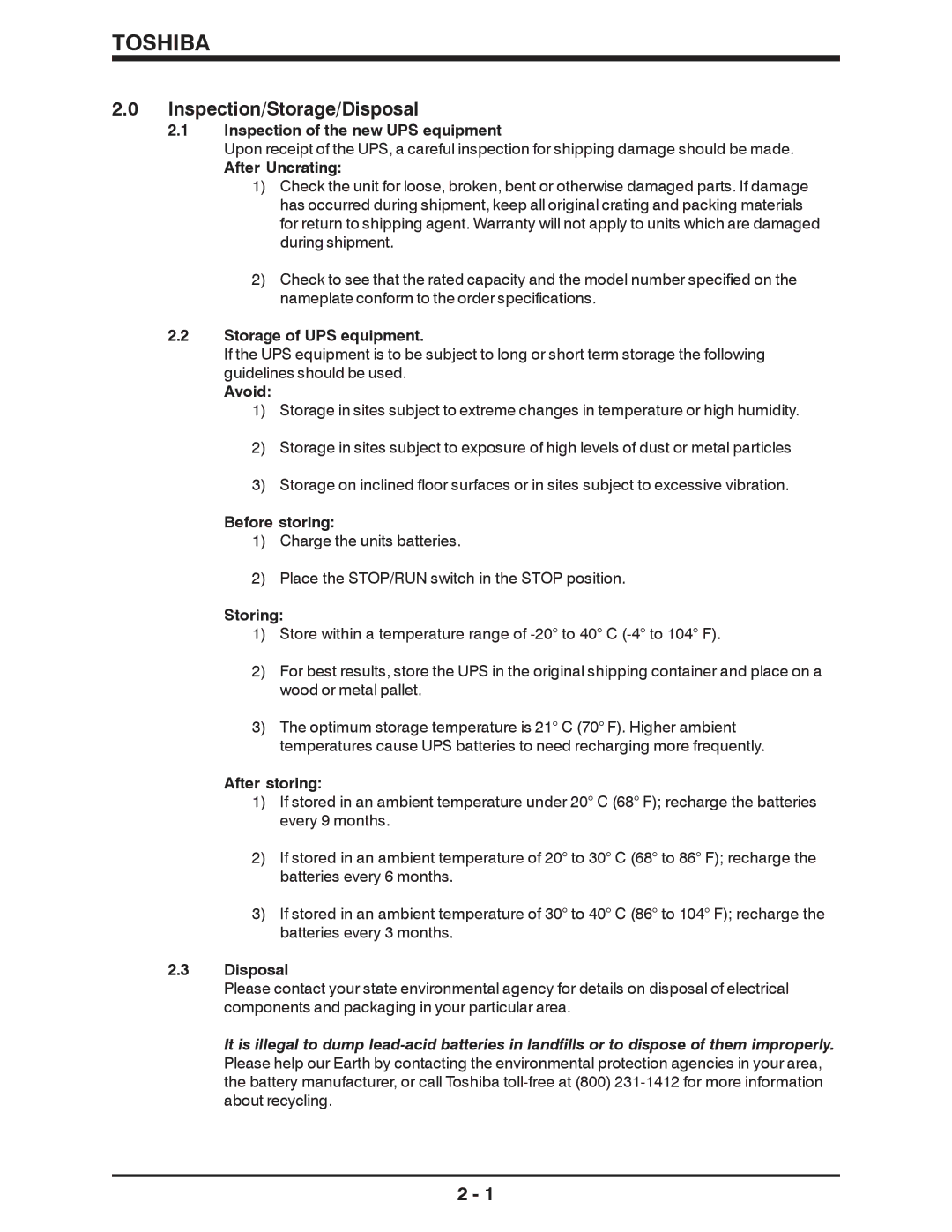
TOSHIBA
2.0Inspection/Storage/Disposal
2.1Inspection of the new UPS equipment
Upon receipt of the UPS, a careful inspection for shipping damage should be made.
After Uncrating:
1)Check the unit for loose, broken, bent or otherwise damaged parts. If damage has occurred during shipment, keep all original crating and packing materials for return to shipping agent. Warranty will not apply to units which are damaged during shipment.
2)Check to see that the rated capacity and the model number specified on the nameplate conform to the order specifications.
2.2Storage of UPS equipment.
If the UPS equipment is to be subject to long or short term storage the following guidelines should be used.
Avoid:
1)Storage in sites subject to extreme changes in temperature or high humidity.
2)Storage in sites subject to exposure of high levels of dust or metal particles
3)Storage on inclined floor surfaces or in sites subject to excessive vibration.
Before storing:
1)Charge the units batteries.
2)Place the STOP/RUN switch in the STOP position.
Storing:
1)Store within a temperature range of
2)For best results, store the UPS in the original shipping container and place on a wood or metal pallet.
3)The optimum storage temperature is 21° C (70° F). Higher ambient temperatures cause UPS batteries to need recharging more frequently.
After storing:
1)If stored in an ambient temperature under 20° C (68° F); recharge the batteries every 9 months.
2)If stored in an ambient temperature of 20° to 30° C (68° to 86° F); recharge the batteries every 6 months.
3)If stored in an ambient temperature of 30° to 40° C (86° to 104° F); recharge the batteries every 3 months.
2.3Disposal
Please contact your state environmental agency for details on disposal of electrical components and packaging in your particular area.
It is illegal to dump
2 - 1
